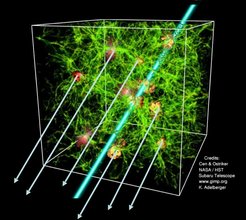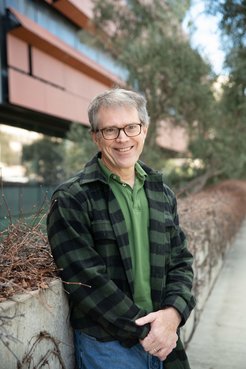Biermann lectures 2024: Galaxies and Intergalactic Matter at Cosmic “Late Morning”
By Charles (Chuck) Steidel, California Institute of Technology (Caltech) in Pasadena, California
Several hundred million years after the Big Bang, the Universe had cooled sufficiently to allow stars to form within the first galaxies. As the universe continued to expand while galaxy growth proceeded rapidly, eventually the net radiation produced by young stars was sufficient to ionize nearly all of the hydrogen outside of galaxies – a landmark called “reionization”. The subsequent period of time – when the Universe was between 1 and 3 billion years old – witnessed the most intense period of galaxy growth in universal history, culminating in what has come to be called “cosmic noon”, by the end of which many of attributes of a mature universe had developed. Because this period of adolescence happened after reioinization, we have (arguably) the broadest observational access, with the largest dynamic range, to the physical state of both forming galaxies and the dominant reservoir of diffuse gas outside of galaxies that traces the web-like large-scale structure of the universe.

In this year’s Biermann lectures, Chuck Steidel from Caltech will discuss what we have learned – and what we still do not understand – about the universe of galaxies and the matter between based on observations of the adolescent universe. He will discuss how our “Big Picture” of galaxy formation has evolved over the last few decades, from both a scientific and sociological point of view, and what has driven the changes. He will also discuss how the first two years of data from the James Webb Space Telescope (JWST) have altered the developing picture of a still-earlier phase of galaxy formation. Finally, he will attempt to synthesize the current picture of the “epoch of galaxy formation”, with emphasis on problems that have yet to be resolved.
Steidel’s research focuses on observational studies of the formation and evolution of galaxies and the intergalactic and circumgalactic medium surrounding them, and on developing techniques and instrumentation needed to make progress in these areas using large ground-based telescopes. While the large-scale structure of the universe is dictated primarily by dark matter – whose evolution is reasonably well understood thanks to large numerical simulations such as Millennium or Illustris – the behavior of the normal, baryonic matter embedded in this dark matter structure still poses a challenge as the baryonic processes are very complex.
Steidel has made significant contributions to the field of astrophysics. In the early 1990s, Steidel and collaborators developed the “Lyman break” imaging technique for isolating galaxy populations in prescribed redshift intervals at high redshifts; since 1995, his group has used the Keck telescopes in Hawaii to conduct sensitive spectroscopic surveys of distant galaxies and their gaseous environments, focusing on the adolescent universe at redshifts z=2-4. Their pioneering work has provided important scientific motivation for semi-analytic models and cosmological hydrodynamical simulations of galaxy formation at MPA for the past 30 years.

Steidel has also been involved in the development of state-of-the-art instruments for current and future observatories, as Principal Investigator of three facility instruments for the Keck 10m telescopes, two of which have been delivered (LRIS-B, a UV/blue-optimized multi-object spectrograph, and MOSFIRE, a near-IR multi-object spectrometer optimized for faint objects) and another is currently in full-scale development (LRIS-2). Steidel has been deeply involved in the Thirty Meter Telescope Project (TMT) since 1998, chairing or co-chairing the TMT Science Advisory Committee since its inception, and is leading the design and development of one of the first-light TMT science instruments (WFOS).
Chuck Steidel is the Lee A. DuBridge Professor of Astronomy at Caltech, where he has been a faculty member since 1995. He received his undergraduate degree from Princeton (1984), PhD from Caltech (1990), and was a Hubble Fellow at U.C. Berkeley from 1990-93. He was elected to the U.S. National Academy of Sciences in 2006, and has received numerous awards, including the Muhlmann Prize of the Astronomical Society of the Pacific (for instrumentation; 2016), the Gruber Cosmology Prize (2010), a MacArthur Fellowship (2002), and AAS Warner Prize (1997). He has also held Packard (1997-2002) and Sloan (1994-96) Foundation Fellowships.
Overall title: Galaxies and Intergalactic Matter at Cosmic “Late Morning”
All lectures take place in the MPA Large Seminar Room E.0.11 and will be preceded by tea, coffee and cookies 15 minutes before the lecture starts.
Wednesday, June 19, 15:30
The Evolving “Big Picture” of Galaxy Formation: a Scientific (and Sociological) Retrospective
Wednesday, June 26, 15:30
Reconciling Observations of Stars and Gas, Emission and Absorption, in the Adolescent Universe
Wednesday July 3, 15:30
Q: Is Galaxy Formation “Solved”? Discuss.













